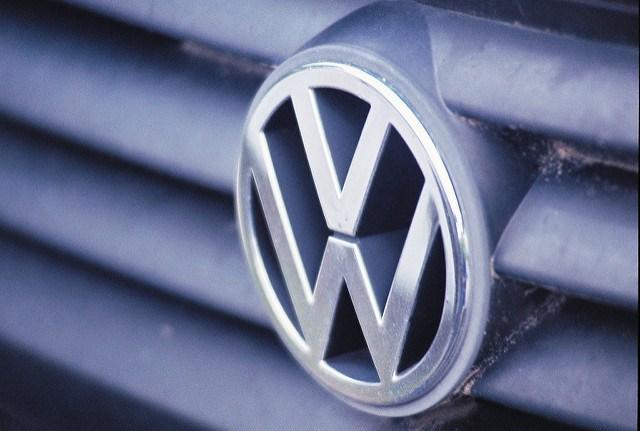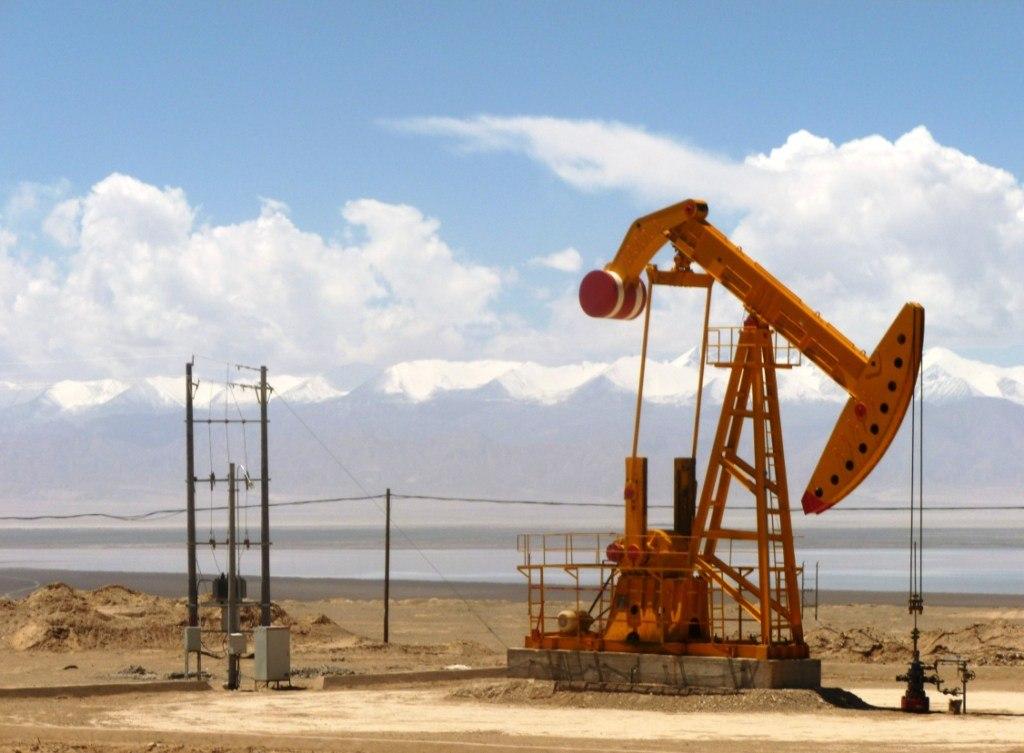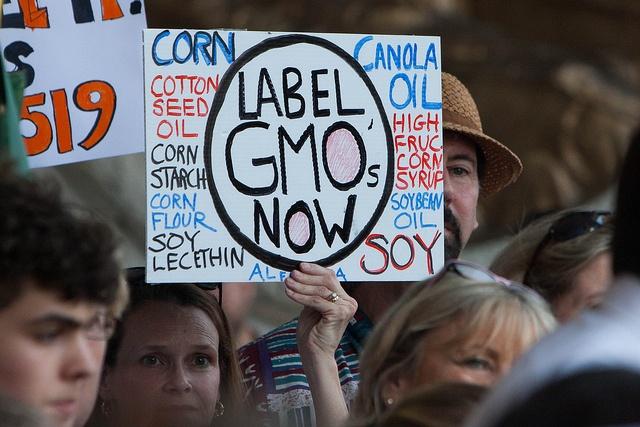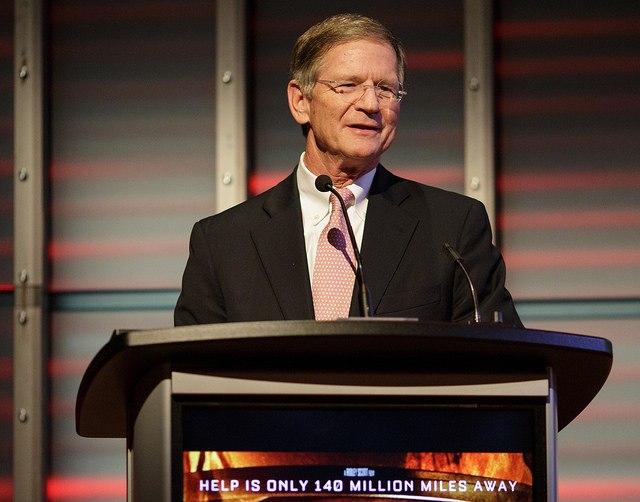Royal Mail doing business in a responsible way


by Sangeeta Haindl — The UK postal service, the Royal Mail, is celebrating its 500th birthday of connecting millions of customers, businesses, organisations and communities, including those in the remote rural areas. While the world has experienced rapid technological change during the past five centuries, the job of delivering mail to someone’s front door is largely unchanged, and still requires someone to take a sack of letters along a local route—this business is still working hard.
The Royal Mail contributed £10.8 billion to the UK economy during 2015-16. As a business it makes the fifth biggest direct contribution of any UK corporation; one in every 175 employees in the UK works for Royal Mail, with a higher proportion doing so in the country’s deprived regions where jobs are scarce. The company has recently published its fourteenth annual Corporate Responsibility Report, which details how the core objectives of its corporate social responsibility (CSR) strategy have helped the business to continue making progress against a backdrop of big change in the delivery and logistics industry.
The Report highlights that the organisation is committed to equal opportunities. Once again, the company has been recognised for the second consecutive year as a Times Top 50 Employer for Women. The success of Royal Mail depends on its people, who represent the company among communities and with customers, six days a week. As a result it has delivered training to over 6,000 managers and union representatives - the largest UK ever investment in joint training. It is also mindful of the environment. Ninety-one per cent of its 7.5-tonne HGV fleet is now fitted with driver telemetry to help reduce fuel consumption. It is ranked first in the ‘Transportation and Transportation Infrastructure’ sector in the Dow Jones Sustainability Index for the second year running, and gained inclusion in the prestigious FTSE4Good Index for the first time.
The Royal Mail has heart, contributing £6.7 million directly to charities, good causes and schemes for disadvantaged groups, with its employees raising a further £3.1 million, including £2.4 million through its payroll-giving scheme. Among other endeavors it has distributed 70 Missing People alerts to its network of up to 139,000 employees since the partnership with the charity Missing People began in November 2014. Happily, 50 missing people have been found or returned home, half of which were children.
Trust is key for this household brand. An Ipsos Mori poll from December 2015 shows that 78 percent of the British public has a favourable attitude towards Royal Mail, the strongest of the surveyed brands. This will hopefully help this great British institution realise its vision of being the best delivery company in the country and across Europe, staying ahead of competitors like DPD, Hermes and others, which are increasing the pressure on Royal Mail’s parcels business—an area crucial to its future as the number of letters sent in Britain continues to decline. Royal Mail knows that doing business in a responsible way is very much part of its history and its future.
Photo Credit: Royal Mail
Volkswagen, GM Face Troubles in Court


It's been a rough week for the auto industry and, not surprisingly, for Germany's leading car maker.
On Friday, the California Air Resources Board (CARB) rejected Volkswagen's proposed fix for the emissions systems in 3.0-liter engines. Air regulators say the proposal submitted is "too vague" on how VW and Audi will limit carbon emissions.
It's the second time CARB rejected a Volkswagen proposal for what air regulators call "incomplete" and "substantially deficient" information about the proposed adjustments. In February, CARB rejected what it called a "single, incomplete plan ... that failed to address the basic requirements in the California Code of Regulations." As a consequence, CARB summarized, the VW and Audi proposals fell "far short of meeting the legal requirements to return those vehicles to the claimed certified configuration."
VW acknowledged the setback, calling it a “procedural step under California state law." The automaker said it will continue to "try to secure approval of a technical resolution for our 3.0L TDI vehicles as quickly as possible.”
VW has maintained for months that fixing the 85,000 defective 3.0L Audi, Porsche and SUV emission systems is simpler than modifying the smaller 2.0-liter VW vehicles. In June, a lawyer for VW told a federal district court judge that the company believed it could come up with a mechanical fix for the emissions problem, a preferable option for the automaker which is currently facing more than $14 billion in fines and other costs.
But VW's reassurances didn't placate CARB, which announced an additional $86 million in civil fines earlier this month. It is the largest set of fines ever levied by California against an automaker.
According to the state, $76 million will pay California's massive investigation bill, which isn't covered by the settlement hammered out by the EPA earlier this month. The remaining $10 million will be put toward research and grant funding to develop new ways to detect defeat devices such as those found in VW vehicles.
General Motors also received bad news from the courts last week. A New York Court of Appeals struck down GM’s use of retail sales index (RSI) to rate car dealers. The court ruled that the company’s rating system didn’t take consumer purchasing trends and market variations into account.
GM was sued by Beck Chevrolet in Yonkers, New York, which said the use of RSI as a metric could unfairly impact whether a dealership could keep its franchise. As of Monday, July 18, GM had already sent a letter to its franchises announcing a change to its rating system.
But the ruling could have widespread impact on automakers in general, as GM is not the only auto manufacturer to use RSI in determining whether franchises are adhering to their contracts.
Image credit: Flickr/Ben
Oil Weakening, Could be Headed Down Coal's Path


A new report from the nonprofit As You Sow analyzes the state of the oil industry. And researchers found several trends that should alarm global energy investors. Oil could follow the same path as coal, they predict, albeit slowly.
If this sounds far-fetched, just remember that coal also seemed unstoppable only a few years ago. But cracks in the industry's armor quickly turned into all-out financial turmoil. This shift led the way to the stunning bankruptcy of America's biggest private coal company, Peabody Energy, earlier this year.
So, is oil really on the same path?
“Only a few years ago, coal was seen as being able to weather the economic changes that are now dragging it down,” said Danielle Fugere, president of As You Sow and a co-author of the report, in a press statement. “That is why investors need to understand the deepening structural risks in the oil industry, which have become more pronounced over the last decade.”
The report found that, while oil remains profitable, some of its key fundamentals are weakening. For example, while capital investments from the oil majors grew massively from 2000 to 2014, production still shrank. Profit margins are also lower, even during the era of ultra-high oil prices, due to oil resources becoming more and more difficult to exploit. And debt levels are rising while cash reserves shrink.
“Independent oil companies, including the majors, are ... becoming the world’s high-cost producers, making them less competitive,” said Amelia Timbers, As You Sow energy program manager and a fellow report co-author, in a press statement. “This trend has been broadly masked by the past decade’s record-high oil prices.”
Another major issue, according to the report, is that oil companies refuse to adapt to the modern reality – a world where climate change is accepted by everyone (except the Republican presidential candidate). This scenario also sees energy sources are becoming more diverse and a world committed to climate action. Yet many in Congress think it is still the 1980s. Perhaps all that funding from climate deniers groups has turned the whole industry one that just denies all reality.
“The future is not set in stone for oil companies, but their failure to acknowledge signs of change and plan appropriate action could be disastrous,” Fugere said.
The contrast with clean energy – which is growing in leaps and bounds – could not be starker. Oil, like coal -- and, soon, natural gas -- are not safe investments. It's time for everyone, everywhere, to shift to clean energy and hasten the end of the fossil fuel era. With the planet regularly breaking warmth records, the sooner, the better.
Image credit: John Hill via Wikimedia Commons
As Advocates Gripe Over GMO-Labeling Law, One Company Leads


On Thursday, the U.S. House of Representatives passed the country's first labeling legislation for genetically-modified organisms (GMOs). President Barack Obama is expected to sign it into law this week.
Advocates were quick to express dissatisfaction with the bill when it hit the Senate floor. Andrew Kimbrell, executive director of the Center for Food Safety, called it a "sham" and a "legislative embarrassment." Food Democracy Now called it a “corrupt bargain.” And multiple groups said it included backdoor dealings with organic food companies and Monsanto, the biotech giant behind the bulk of GMO crops planted in the U.S. as well as the herbicide glyphosate (Roundup).
The final bill represented something of a compromise, and many in the advocacy space were surprised it passed.
Gary Hirshberg, chairman of the Just Label It initiative and co-founder of Stonyfield, called the bill "inadequate." And the initiative officially opposed it. (Its gripes, like many of its cohorts', center around the bill's loose definition of GMOs and its focus on QR codes rather than on-pack messaging.) But the news isn't all bad, he told a group of journalists last week. "In the big picture, coming from 2011 when zero consumers had any knowledge" of GMOs, "this is progress."
"But what this law really shines the light on," Hirshberg continued, "is the critical importance of responsible companies now to do the right thing."
And one leading consumer company is out to do just that. Ahead of the bill's passage on Thursday, the nation's leading yogurt maker announced a policy that blows past any federal or state requirements for GMO labeling.
Dannon's big plans
New York-based Dannon plans to adopt an "all-natural approach" for its three flagship brands, Dannon, Oikos and Danimals, president and CEO Mariano Lozano said at a press briefing on Thursday.
Depending on your background, that sentence either made you smile or cringe. While studies continue to show that American shoppers seek out "natural" foods, advocates have longstanding beef with the ambiguity of the term. But for its part, Dannon set a clear internal definition for its "natural" approach -- and its scope may surprise you.
"For us, 'all natural' means fewer ingredients that are closer to nature, clearer labels, that they are ingredients that we can pronounce, that they are not synthetic and are non-GMO," Lozano explained.
Dannon's first round of non-GMO yogurts represent around 10 percent of the company's product portfolio. But that's just the beginning of what industry experts say is a pioneering strategy. Here's the gist:
- Dannon plans to continue evolving its flagship brands to pivot toward non-GMO ingredients, with the ultimate goal of placing the Non-GMO Project's Butterfly Seal on all Dannon, Oikos and Danimals products. These brands represent half of the milk the company uses and half of its on-shelf turnover.
- Dannon will label all products containing GMO ingredients nationwide by the end of this year.
- Starting in 2017, the company will go one step further to ensure the cows in its supply chain are fed non-GMO feed, a first for a leading non-organic yogurt maker.
Going above and beyond on labeling
Dannon's latest announcement doubles-down on prior commitments. The company committed to across-the-board GMO labeling back in April, before the aforementioned bill was even a glimmer in its creator's eye.
"We pledged that for the end of next year," Lozano told TriplePundit after the briefing last week. "But we are having very good progress, so we have high hopes that we can accelerate that commitment. Before the end of the year, we are going to have all our portfolio and all our packaging disclosing any engineered or modified ingredients."
Dannon will use clear, on-pack messaging to denote GMO ingredients, rather than the QR code system mandated by the new bill. Hirshberg of Just Label It, who will work with Dannon as a stakeholder engagement partner on the project, called the QR code system a "gimmick." And Lozano agreed it doesn't go far enough.
"If we put the choices of the consumer at the heart of our strategy, we need to make it easier for the consumer to get to know what is inside each of the products," he told TriplePundit. "We are happy that we are going to be doing so one year in advance. I think that we will set the tone and make it very clear what Dannon’s position is on that."
The next step: Non-GMO feed
Dannon is already a leader in animal welfare: Over 90 percent of its milk comes from farms certified by Validus Animal Welfare Review, a move it made back in 2012. But while consumers continue to gravitate toward more humane products, animal feed is an area that doesn't receive much attention.
So, if consumers don't care, why should Dannon? In short, because feed makes up the bulk of a non-GMO supply chain. Take corn, for example: 40 percent of all corn produced in the U.S. is used for feed, with only 10 percent going toward human consumption, said Megan Westgate, executive director of the Non-GMO Project. "So when we talk about building a non-GMO supply chain, addressing animal feed is really critical," she said at the briefing.
The Non-GMO Project is the only standard that requires continuous testing of animal feed, mainly because such tests are "very difficult." You can't test milk or other products to ascertain whether or not an animal has eaten GMO feed, Westgate explained. Instead, companies must trace their supply back to the feed level. "I can say hands down that verifying animal products is the most complicated part of our standard," Westgate said. "And that’s why this commitment is so historic, especially when you look at the scale that we’re talking about.”
The Non-GMO Project serves as Dannon's third-party verification partner. The food giant will also work with Green America on its quest to move its entire feed supply chain to non-GMO. Alisa Gravitz, president and CEO of Green America, praised the yogurt maker for raising the bar with a multifaceted pledge.
"We are really honored to be collaborating with Dannon on this historic pledge," Gravitz said last week. "I’ve been doing this work for 35 years, and I can tell you that the Dannon pledge is the biggest, boldest, most visionary and most strategic commitment I’ve seen on the part of a major food company."
All Dannon-branded products will make the non-GMO feed switch by the end of next year. Oikos and Danimals will fully transition a year later.
The bottom line
The battle over the efficacy of GMOs is sure to continue. But when it comes to transparency, the statistics are clear: Over 90 percent of Americans want to know what's in their food. And regardless of state and federal legislation, that consumer push will only grow stronger.
Whether Dannon's choice to lead rather than lag proves as "historic" as its partners predict remains to be seen. But shoppers are already taking notice: Dannon's ad for its new yogurts, featuring a "mom hero" who's concerned about food labeling, was viewed over a million times on YouTube in only a week.
It seems the Dannon case study yet again supports what we all suspected: The winners in America's great food fight will be the companies that voluntarily disclose their ingredients and respond to the nation's calls for greater transparency.
Image credits: 1) Flickr/CT Senate Democrats; 2) Courtesy of Dannon
Publix Commits To Cage-Free Eggs


Life is slowly improving egg-laying hens in America. Publix, the fifth largest grocery store chain in the country, is the latest to make a cage-free commitment. The company will transition to 100 percent cage-free eggs by 2026.
That means fewer hens will be trapped in battery cages that are only about 67 square inches, which is smaller than a sheet of letter-sized paper. The cages are so small that hens can’t spread their wings or engage in other natural chicken behaviors.
Publix already sells seven varieties of cage-free eggs, which is “more than most traditional retailers,” the company claims on its website. It also says it is “diligently working” with egg suppliers, industry leaders, governmental agencies and non-governmental organizations to “better understand the timing of converting our shell egg supply to completely cage-free.”
Why will it take so long for Publix to make the switch? The grocery chain lists problems associated with the transition, which include the speed of the industry change. And make no mistake: The grocery sector is changing with regard to battery cages.
Publix’s announcement means all of the top 25 grocery store chains in the U.S. have made commitments to go cage-free. Or as Wayne Pacelle, president and CEO of the Humane Society of the United States (HSUS), wrote in a blog post on Friday, the announcement “represents what could be a final nail in the coffin for the long era of cage confinement of hens.”
Publix’s announcement comes after an extensive campaign by animal welfare groups targeting the grocery store chain. Mercy For Animals ran a three-month campaign called "Hen Hell" that included a video exposing cruelty to hens in the company’s supply chain. As part of the "Hen Hell" campaign, volunteers spread leaflets at Publix stores in the Southeast and conducted consumer call-ins. A TV ad was also part of the campaign.
HSUS launched a website for its "Caged for Publix" campaign that asked concerned consumers to call the grocer and urge it to make a cage-free commitment. A Change.org petition also called on Publix to commit to 100 percent cage-free eggs.
Hillandale Farms, one of the leading shell egg suppliers in the U.S., recently announced it will shift to cage-free systems. All of the company’s future farm expansions will be with chickens housed in cage-free systems.
These are just the latest in a slew of similar announcements in recent years. Less than a year ago, McDonald’s announced it would transition to cage-free eggs. Not long after, a number of other companies -- including Walmart, Costco, Denny’s, IHOP, KraftHeinz and Nestle -- made similar commitments.
Why are so many companies making commitments to phase out cruel battery cages from their egg supply chains? It is what consumers want. Survey after survey indicates that consumers favor buying products from food companies whose supply chains are free of animal cruelty. In a 2013 survey by the Hartman Group, 65 percent of respondents said they want animals to be raised in as natural an environmental as possible. A year later, almost 95 percent of those surveyed by American Humane said they are “very concerned” about the welfare of farm animals.
Hillandale Farms acknowledged consumer demand played a big role in its shift to cage-free systems. In a statement, the company acknowledged that consumers want cage-free eggs, calling cage-free systems “a practice that is considered progressive by today’s consumers.”
Image credit: Flickr/Joel Kramer
The DNC Platform Is Tough On Climate Change


Climate change is one of the most urgent issues of our day. So, it's great to see that the Democratic Party is taking the issue seriously. The 2016 Democratic National Convention platform supports a price on carbon and methane emissions.
The DNC platform acknowledges that climate change “is an urgent threat and a defining challenge of our time.” It also points out some startling facts about climate change, including that 15 of the 16 hottest years on record have occurred this century and that 2016 is on track to break global temperature records. It mentions that coastal cities like Miami and Baltimore are threatened by rising seas, and the U.S. West Coast has suffered from years of extreme drought.
The DNC platform builds upon the work that President Barack Obama has already done to tackle climate change. That extends to reducing greenhouse gas (GHG) emissions by over 80 percent below 2005 levels by 2050. It also includes America's pledge to the Paris Agreement, which aims to keep average global temperature rise to below 2 degrees Celsius. The DNC's support also extends to the Clean Power Plan, which seeks to reduce carbon pollution from power plants through regulation by the Environmental Protection Agency.
The DNC also takes a tough stance on fossil fuel companies, even calling for eliminating tax breaks and subsidies for these firms. It calls for extending tax incentives for energy efficiency and clean energy. It opposes drilling in the Arctic and off the Atlantic coast, and calls for reform of fossil fuel leasing on public lands.
The platform also supports President Obama’s decision to reject the Keystone XL pipeline, and is in favor of Department of Justice investigations into ExxonMobil.
The DNC supports what it calls a “clean energy economy,” and that support includes:
- Getting 50 percent of electricity in the U.S. from clean energy sources with a decade.
- Installing half a billion solar panels within four years and enough renewable energy to power every home in the country.
- Reducing energy waste in homes, schools, hospitals and offices.
- Modernizing the electric grid.
- Making American manufacturing the cleanest and most efficient in the world.
- Reducing oil consumption through cleaner fuels, investing in public transportation, more electric vehicles, increasing fuel efficiency of vehicles and build bicycle and pedestrian infrastructure in urban and suburban areas.
- Powering the government with 100 percent clean electricity.
“This is the most aggressive plan to combat climate change in the history of the Democratic Party,” said Warren Gunnels, Bernie Sanders’ policy director. “We have got to follow through on the promise of this agreement, to put people before the profits of polluters and solve the global crisis of climate change before it’s too late.”
The Democratic and Republican parties greatly differ on climate change
The RNC Platform is completely opposite, favoring an “all of the above” energy policy that takes “advantage of all our American God-given resources.”The RNC supports developing coal and opposes cap-and-trade legislation. It also supports offshore drilling on the Atlantic coast and the Arctic, as well as opening the outer continental shelf for oil drilling and increasing oil and natural gas exploration on federal land.
The RNC also supports the Keystone XL Pipeline. In short, it is a recipe for an environmental nightmare.
When it comes to climate change, the views of the two presumptive nominees couldn’t be more different. Presumptive Democratic nominee Hillary Clinton calls climate change “an urgent threat and a defining challenge of our time.” But her GOP counterpart Donald Trump has repeatedly called it a hoax. Clinton calls for reducing American oil consumption by a third, reducing energy waste and generating enough renewable energy to power every home in the U.S. Politifact says of Trump that “he’s enshrined opposition to climate change efforts as a key part of his platform.”
Image credit: Flickr/Marc Nozell
IZ Collection Melds Style and Comfort for Wheelchair Users


We've all purchased something off the rack that looked great in the fitting room, but didn't seem to fit quite right once we sat down in the office.
Now imagine what wheelchairs users often endure when they try to wear mainstream clothing.
To that end, Izzy Camilleri, a Toronto-based fashion designer whose threads for men and women have been worn by David Bowie, Samuel L. Jackson, Meryl Streep and Jennifer Lopez, launched IZ Collection specifically for people who use wheelchairs for mobility.
From whimsical shirts to power suits for the office and even biker jackets, Camilleri's new line of apparel is both comfortable and eye-catching. Camilleri considered both fabrics and contours for skin integrity in order to avoid any pressure points that could cause discomfort and even worse, instigate pressure sores.
The clothes are easy to slip into and are cut so that they do not bunch at the waist or ride down in the back.
During her career working with film productions, Camilleri gained experience designing clothes for all body types. But it was a request for a warm winter cape from a Toronto reporter, a wheelchair user since the early 1980s, that inspired Camilleri to start a line for a population that has been largely ignored by the garment industry.
“This goes beyond the clothes,” Camilleri said in a video released in May to coincide with an exhibition of her work at a Toronto museum. “It’s about giving someone their own personality back, giving them a sense of self . . . there just hasn’t been anything like this.”
Camilleri joined a small but vocal and visible group of designers who are making clothes for wheelchair users that are far more enjoyable, fashionable and comfortable to wear than what was previously available. While several companies design and market clothes for wheelchair users, the looks are often pallid while the online shopping experience is generally dull and uninspiring.
IZ Collection is showcased on a platform that engages the online shopper, while using everyday models who look fantastic and certainly appeared to have fun during the photo shoots.
More than 3 million Americans use wheelchairs for independent mobility. As cultural norms over what constitutes “fashion” change and more companies relax their office dress codes or eliminate them altogether, more consumers are demanding clothes and accessories that relate to their beliefs and lifestyle, instead of complying to what fashion brands are often quick to dictate to us. Camilleri’s clothes are not only sharp and eye-catching, but also offer dignity to those who wear them.
The company has a social mission as well: Profits from the sale of IZ Collection's Fashion IZ Freedom tees support accessibility programs in North America. And 10 percent of the brand's sales go toward building more wheelchair ramps in Canada and the U.S., the company said.
Image credits: IZ Collection
5 Important Lessons From an Eco-preneur


By Jessica Thiefels
If you want to be in a business with a focus on the environment, you want to get advice from Ted Rollins. He’s the successful eco-preneur who started Campus Crest with $14,000 and grew it to become the second largest student-housing platform in the world, with a focus on the triple bottom line of environmental, social and economics.
He took it public on the New York Stock Exchange and recently worked with a group to buy it back and take it private once again. It grew from that $14,000 investment into a company with $2.3 billion in assets and 46,000 beds in 65 markets around the U.S. and Canada
He’s recognized by the Inc. 500 as the founder of the second fastest-growing business in his division. He’s also a regular nominee and finalist for Ernst and Young entrepreneur of the year.
He’s now on the eve of his latest venture, Valeo Groupe, a multinational vertically integrated niche-housing platform.
He's sharing the top five most valuable business lessons he’s learned over the course of his career thus far in hopes that other ecopreneurs will be be successful as well. The lessons seem simple, but can have a significant impact on your success.
Find balance throughout your business
“Balancing economic returns with environmental and social stewardship is something that requires thoughtful leadership,” Rollins says. It’s this kind of focus that brings about the success you set out to see, both in your business and the environment.
“In our business, we had taken an ongoing entity [Campus Crest] and then began to integrate these components. In doing so it really challenged our team’s creativity and thoughtfulness, but we kept our focus on this with milestones and eventually were successful.”
Invest in another eco-preneur ... or a few
Your business can’t stand on your shoulders alone — at least not forever. Take the time to invest in the right people, who believe in what you’re trying to accomplish and share the same passion and drive about what you are trying to accomplish.
Don’t just invest in them by hiring them on and training them. Involve them in your decision-making, says Rollins. “Good team members working together will make better decisions.” Make sure that you have a good group with complimentary skill sets.
Not sure where to start? Rollins suggests checking out "Smart Tribes" by Christine Comaford.
Be persistent — especially when you’re ready to give up
Being an eco-preneur and finding solutions for an environmental problem, isn’t easy. Thanks to lawmakers and regulations, you’ll get push back every step of the way, but Rollins urges: “Keep on pushing until you achieve your goal even when you are at the end of your rope. Especially when you are at the end of your rope.”
The cautionary tale of the old gold miner that stopped digging on his claim 1 inch from the gold is one to hold onto.
Be thoughtful
It’s nice to be thoughtful in terms of your employees, what you offer and what your company culture provides. But, Rollins is referring to your plan. Make sure you take the proper amount of time to plan and follow a process.
“Once you’ve taken time to create it… follow it!,” urges Rollins. He continues, “It’s that simple. If you Plan your work, and work your plan, then your plan will work.”
Dream big — seriously
It’s something your parents always told you to do as a child, but you may scoff at it now as an adult. But now is not the time to forget about dreaming big, especially if you want to make the environment a better place for all of us. “If you can’t dream it, you never will do it,” says Rollins.
Invest in the people who believe in the world that you believe in, create a thoughtful plan and execute it, and most importantly, don’t stop dreaming. If it’s worked for Ted Rollins, it just might work for you.
Image credit: Flickr/Andrew Malone
Jessica Thiefels has been writing for more than ten years and is currently a lifestyle blogger and the editor of Whooo’s Reading and Carpe Daily. She is also the owner of her own small fitness business, Honest Body Fitness, and is using her experience from writing, editing and marketing to become a successful entrepreneur. Follow her on Twitter @Jlsander07.
Climate Science Witch Hunt Expands to NGOs


Lamar Smith, a 29-year veteran of the U.S. House of Representatives, has long been hostile to climate science. The Texas Republican, who serves as chairman of the House Science Committee, gained notoriety for his harassment of scientists at the National Oceanic and Atmospheric Administration (NOAA). Smith’s targets included a former astronaut, NOAA Administrator Kathryn Sullivan, with his insistence that the agency should be studying the weather and not climate science at all.
Earlier this year, Smith spearheaded the passage of a House bill that tightly restricts the kinds of grants the National Science Foundation chooses to fund. Climate change research is now excluded -- in his words, it does not serve the “national interest.” He also wielded an ax on NASA’s budget over the agency’s climate research. Claiming that climate change science is full of “uncertainties,” Smith became one of the loudest voices on Capitol Hill to scream that all environmental legislation is a job-killer.
His favorite tactic? Smith is quick to issue subpoenas to climate scientists, demanding every email related to climate change in the hope he can find something that fits his climate denial agenda.
Smith’s political witch hunt already ensnared the 17 state attorneys general investigating ExxonMobil. (They allege the oil giant knew about climate change decades ago, only to suppress the information.) Now, it's extending to environmental NGOs.
The Union of Concerned Scientists (UCS) is one such group from which Smith demanded documents. The fracas started on May 18, when Smith and the House Science Committee sent UCS a letter demanding all emails exchanged with the aforementioned attorneys general and other NGOs.
At issue is UCS’ role in investigating the allegations that ExxonMobil and other fossil fuel companies have distorted the American public’s understanding of climate science. According to UCS, its researchers provided attorneys general across the nation with publicly-available information that ranges from climate impacts to tactics energy companies employ to cast doubt on climate research.
ExxonMobil claims such investigations are an affront to the company’s First Amendment rights. But legal scholars, including Yale School of Law dean and professor Robert Post, conclude this is a huge stretch when the subject is fraud.
Smith is among those in Congress who are quick to defend the company, and met state justice departments’ subpoenas of ExxonMobil with a tit-for-tat response. To that end, UCS, which says it has long been transparent, is pushing back -- and hard:
“It’s beyond ironic for Chairman Smith to violate our actual free speech rights in the name of protecting ExxonMobil’s supposed right to misrepresent the work of its own scientists and deceive shareholders and the public,” Ken Kimmell, president of UCS, said in a statement.
Since Smith acceded to the leadership of the House Science Committee in 2013, he has used it as a bully pulpit to discredit climate science. Eddie Bernice Johnson, a Democrat from Texas who is also on the House Science Committee, has accused Smith of abusing power -- noting that he issued more subpoenas in his 3.5 years as chair than the committee has since it was first established in 1954.
Ironically, Smith has praised legislation such as solar tax credits in the past, and he was quick to applaud stimulus funding for electric buses during the early days of the Obama administration. But low oil prices have hurt the energy sector in Texas. So there needs to be a scapegoat, and climate science is clearly Smith's sacrificial lamb.
Meanwhile, Smith has accepted at least $600,000 in political donations from energy companies during his career, the Washington Post reported last year. Over $85,000 came into his campaign’s coffers over the past year, reports OpenSecrets. The largest individual contributor within that sector is NuStar Energy — a company which made it clear that climate-related legislation would have a negative impact on its business.
Image credit: NASA/Flickr
China Accused of Rapidly Building Coal Plants, Despite Climate Promises


China has long held the mantle as the world’s manufacturing center. It's also the world’s largest carbon-emitting nation. After years of criticism, China has appeared to take the risks related to climate change seriously, and became a signatory on last winter’s COP21 agreement. Long an adversary of the U.S. when it comes to global climate issues, China joined American diplomats and those from 120 countries to ratify COP21 this April.
Meanwhile, China’s solar power sector is rapidly expanding. And evidence suggests China's overall renewables industry is surging overall, while coal consumption declined. Even the actor and longtime climate activist Leonardo DiCaprio praised China’s efforts earlier this year.
But according to Greenpeace, China is on pace to open one new coal-fired plant a week until 2020. The results mean the country’s government could waste at least 1 trillion Chinese Yuan, or $150 billion, on what the environmental group says is unneeded power capacity coming from fossil fuels. Such growth will continue, even after Greenpeace applauded China earlier this year for what the country called a crackdown on coal-fired power plant approvals.
The outcome of these new plants would reverse the largely downward trend of coal use in China. New energy policies implemented earlier this decade led to the plateau of coal consumption in 2011, and even a decline two years later. But Greenpeace says the green light for more coal plants has stayed on, largely because an updated directive in April exempted both projects in China’s western region and plants connected to the national grid by long-distance transmission lines. And not all of China’s provinces are subject to its labyrinth of energy rules. Combine these factors, as many as 660 new coal-fired plants could launch across the country over the next several years.
By 2020, China could have as much as 1,200 gigawatts worth of coal-fired power plants either fully operational or under construction. But Greenpeace estimates that the scaling-up of renewable power technologies means the country could see an overcapacity of a minimum of 400 GW. In addition to the money wasted, Greenpeace researchers claim that half of the new coal-fired plants under construction, or already approved, are in the country’s most water-stressed regions.
Furthermore, the addition of these new coal plants could slow the implementation of clean-energy technologies in many areas or compete with wind or solar power installations currently under construction. This means some areas could generate renewable power with no way to contribute efficiently to the grid. Utility managers, who are eager to keep the lights on and factories humming, will still gravitate to signing contacts with coal power plant operators, who are seen as more reliable than their next-generation counterparts.
This expansion of coal puts a damper on China’s pledge to generate 15 percent of its power from renewables by 2020, with an increase to 30 percent by 2030. It would also dwarf China’s pledge to retire 70 GW of coal-fired power capacity.
Such a surge in power generation from coal could put China’s renewable power commitment in doubt or, in a worst-case scenario, even mathematically impossible.
To stem what Greenpeace portrays as a financial and environmental disaster, the organization recommends several high-level changes in policy. The report’s authors suggest:
- The central government’s ban on new coal-fired plant construction should extend throughout all provinces.
- The government should cancel projects that started last year or later, as well as those in water-stressed areas.
- Energy officials should retire older coal plants rather than retrofit them.
Such advice goes above and beyond what China’s leading energy policymakers recommended earlier this spring.
Such recommendations, however, are akin to using a lasso to catch an Airbus A380 jetliner. Despite China’s recent manufacturing slowdown, its middle class keeps expanding and even Fortune magazine predicts the nation’s growing demand for energy will not slow down until 2030.
But if China expects continued cooperation from the U.S., European Union and its wary neighbors in Asia on issues, including those related to climate change and energy, the government needs to find a way to put the brakes on what environmental groups describe as a ravenous thirst for fossil fuels.
Image credit: Leon Kaye